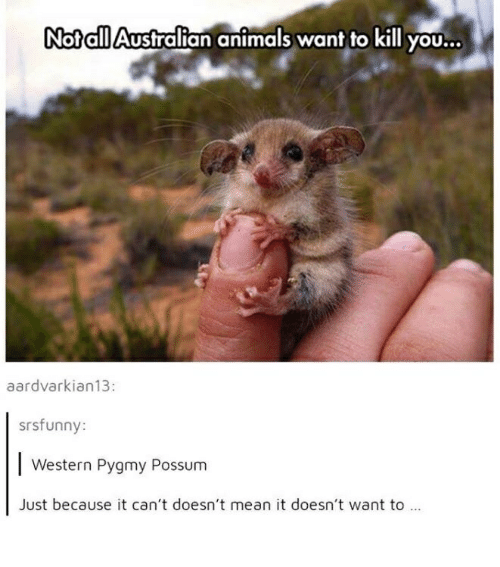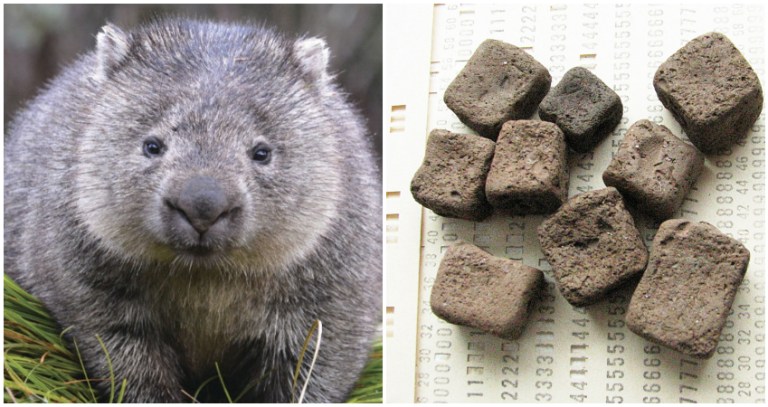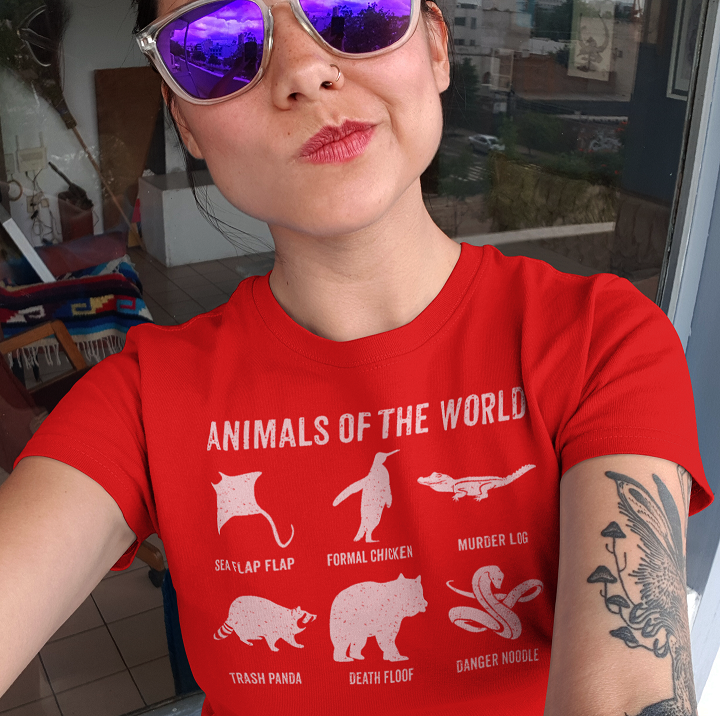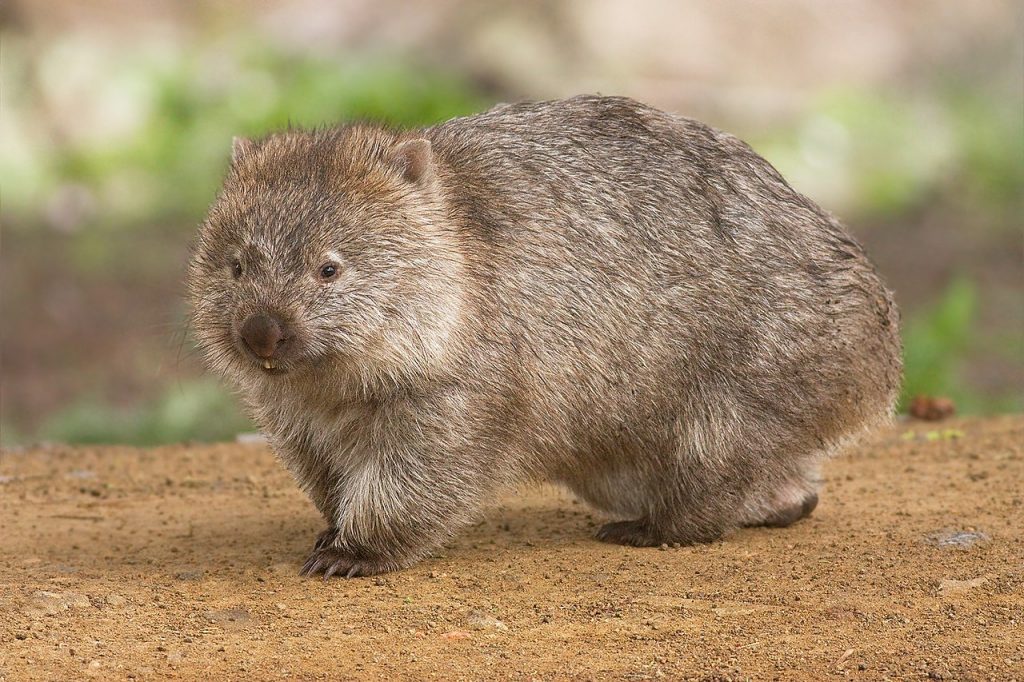While many of my friends are from Australia, the entire continent seems like a giant “NOPE” to me.
Really. I don’t get it. It’s somewhat isolated, expensive to travel to, and they have some really weird animals.
I’m not sure what’s happening there. A danger noodle eating a toddler-sized flappy squeak? Sure, why the hell not.
Get our ‘Animals of the world’ shirt, on sale now in our store!
But I guess not everything is trying to kill you. Just most things.

And things in Australia just keep staying weird. Like the wombat.
Looking like the lovechild of a bear and an otter, the wombat is a marsupial that can grow to be 40 inches (about 1 meter) long and weigh as much as 77 pounds (35 kg). It can reach up to 25 miles per hour (40 km per hour) when threatened, meaning that like everything else in Australia, the wombat would also like to kill you and could, given the right circumstances. As the article creatively titled “Wombat Combat” points out, they don’t mess around:
A wombat will hoist an intrusive dingo on its back and crush it against the roof of its burrow.
It can skittle a fully grown man as if a 120-litre barrel had bowled him over.
And in zoos around Australia, it is understood wombats attract the second-highest danger rating, a rung down from lions and bears.
So it comes as no surprise to author and wombat expert James Woodford that 60-year-old bushfire survivor Bruce Kringle wound up in hospital after a sustained mauling from a wombat he encountered during an early morning call of nature.
But something else that makes these guys unique is their feces.
Poop
Their poop is a cube… And they can poop as many as 100 times a night. The square shape is actually important, because they use their droppings to mark their territory, and the cube shape keeps it from rolling away.
By the way @BBCiPM, we’re delighted to say that we now have Wombat poo in our collection…here it is in all it’s cubic glory! pic.twitter.com/Q7C9erGyd8
— National Poo Museum (@PooMuseum) September 15, 2018
Their rectums are circular, so it would stand to reason that their poo would be squeezed out in a cylinder-like shape. But no, because this is Australia and Australia doesn’t care about logic or reason.
According to the BBC:
In wombats, the faeces changed from a liquid-like state into a solid state in the last 25% of the intestines – but then in the final 8% a varied elasticity of the walls meant the poop would take shape as separated cubes.
This, the scientists explain, resulted in 2cm (0.8in) cube-shaped poops unique to wombats and the natural world.
The marsupial then stacks the cubes – the higher the better so as to communicate with and attract other wombats.
So there you go. I’m not sure what you’ll do with this information in life or how it will affect you, but now that’s something you know!



